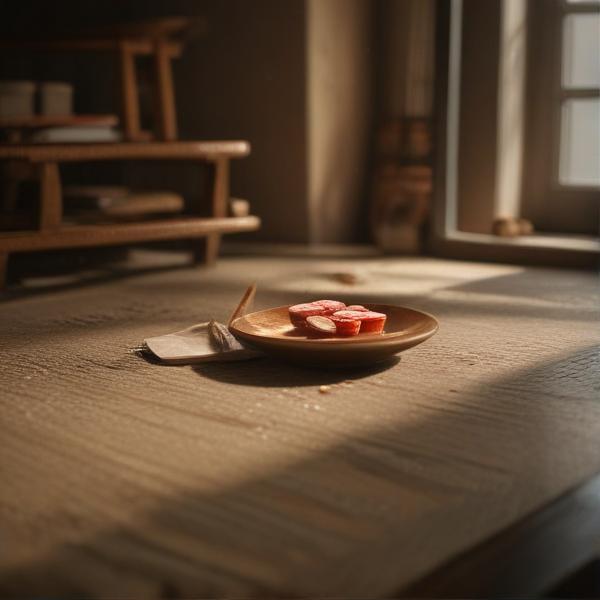基本信息 (Basic Information)
含义与用法 (Meanings & Usage)
中文核心释义 (Core Chinese Meaning): 用葫芦制成的盛水或舀水的用具;有时也指像瓢状的容器。
英文核心释义 (Core English Meaning): A ladle, dipper, or scoop made from a gourd; sometimes refers to any container shaped like a gourd.
象形意义 / 为何这么写 (Pictographic Meaning / Writing Rationale)
文言文释义 (Classical Chinese Meaning)
与现代意义相近,古代泛指用葫芦制成的器具,亦代指壶、盏等容器。Similar to modern meaning; in ancient times, it generally referred to vessels made from gourds and could also denote pots or cups.
深入学习 (In-depth Study)
字源故事 (Origin Story)
字形演变 (Character Evolution)
常用词语和例句 (Common Words & Examples)
瓢虫 (ladybug; ladybird beetle)
花园里有许多美丽的瓢虫。
Eng: There are many beautiful ladybugs in the garden.
木瓢 (wooden ladle)
他用木瓢从井里舀水。
Eng: He used a wooden ladle to scoop water from the well.
相关成语 (Related Idioms)
相关成语信息待补充。Related idiom information pending.
多语言翻译 (核心释义) (Translations (Core Meaning))
- French: louche (en courge), dipper, récipient en forme de gourde
- German: Schöpfkelle (aus Kürbis), Kelle
- Spanish: cucharón (de calabaza), cucharón
- Italian: mestolo (di zucca), mestolo
- Portuguese: concha (de cabaça), cucharão
- Russian: ковшик (из тыквы), черпак
- Arabic: مغرفة (من القرع)، مغرفة
- Persian: ملاقه (از کدو)، قاشق بزرگ
- Dutch: pollepel (van kalebas), lepel
- Polish: chochla (z tykwy), łyżka
- Vietnamese: cái gáo (làm từ bầu), gáo nước
- Ukrainian: черпак (з гарбуза), ополоник
视频学习资源 (Video Learning Resources)
通过以下链接在热门视频网站搜索 "瓢" 的更多讲解:
Search for more explanations of "瓢" on popular video sites:
- 在 Bilibili.com 搜索 "瓢 字源 说文解字" (Search on Bilibili)
- 在 YouTube.com 搜索 "瓢 character origin etymology" (Search on YouTube)
网络参考 (Web References for "瓢") ()
网络内容摘要 (Web Content Summary):
瓢的核心含义是指用成熟的葫芦干壳做成的盛水用具,常切成两半,既能盛水,又能漂浮在水上。Core meaning of "瓢": It refers to a water container made from the dried shell of a mature gourd, usually cut in half. It can hold water and float on the surface.
“瓢”字的造字本义与象形文字相关,上部“票”表示其漂浮的特性,下部“瓜”象征葫芦,形象地描绘了瓢的来源和用途。The character structure is pictographic: the top part "票" indicates the floating quality, while the bottom "瓜" refers to the gourd, visually representing the object and its function.
- 文化背景:古人在生活中常用瓢舀水或盛水,因此“瓢”也象征质朴的生活工具。 Cultural background: In ancient times, "瓢" was a common everyday tool for scooping or containing water, symbolizing simplicity.
- 常用词语:如“水瓢”(water ladle),也可指“瓢虫”(ladybug),但后者含义完全不同,源自昆虫的形状。 Common words: For example, "水瓢" means water ladle. Note that "瓢虫" (ladybug) uses "瓢" due to shape resemblance, not the container's meaning.
- 易混淆点:不应与“漂”或“票”混淆,虽然“瓢”字结构中含有“票”,但两者含义不同。 Common confusion: Do not confuse "瓢" with "漂" (float, drift) or "票" (ticket), despite structural similarities.
如果资料有限或资料质量不高,请注意“瓢”作为单字使用相对有限,主要与传统生活和物品相关。 Note: The usage of "瓢" as a single character is relatively limited and is mainly connected with traditional daily objects.
汉字"瓢"的起源、演变过程-汉字字源辞典
票 ,既是声旁也是形旁,是" 漂 "的省略,表示浮在水上。 瓢 ,篆文 (票,即"漂",浮在水上) (瓜,瓜壳),表示可以漂浮在水上的盛水用具。 古人将成熟葫芦干壳切成两半,掏去内瓤,成为两个盛水用具,因能漂浮而便于水塘、水缸使用。 造字本义:名词,半边葫芦干壳做成的盛水用具 。
瓢字形演变字源_汉字「瓢」_瓢的甲骨文_瓢的金文_金文编_甲骨文编
瓢字形演变字源,汉字「瓢」,瓢的甲骨文,瓢的金文,金文编,甲骨文编 明清实录 | 二十四史 | 四库全书 | 古今图书集成 | 历史人物 | 说文解字 | 成语词典 | 甲骨文合集 | 殷周金文集成 | 象形字典 | 十三经索引 | 字体转换器 | 篆书识别 | 近义反义词 | 对联大全 | 家谱 ...
更多图片 (瓢 More Images) ()
